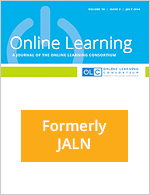The Economics of ALN: Some Issues
This paper examines the social cost of ALN. This social cost is considered from several vantage points. First, student time is identified as the primary input in instruction. This time investment is not forthcoming automatically - several incentive problems must be resolved to elicit it. The resolution of these incentive...

